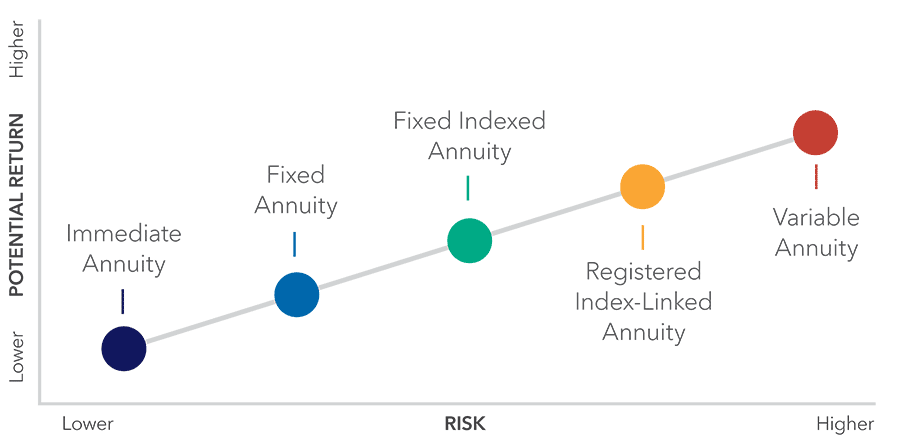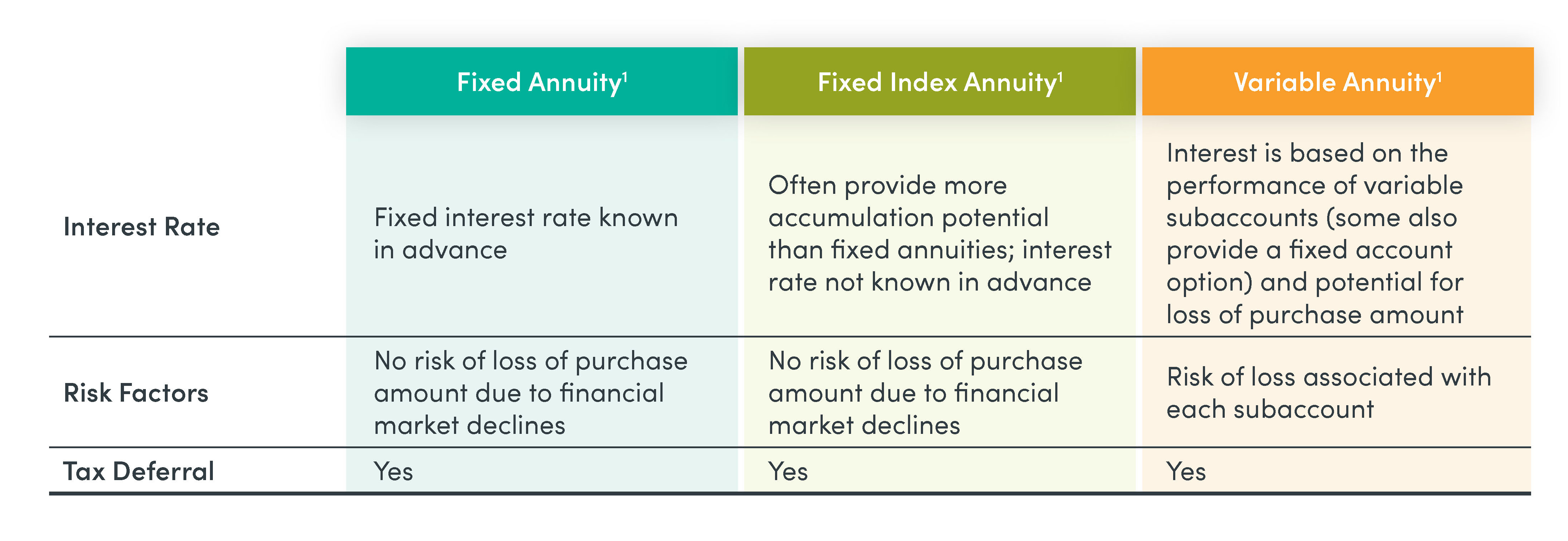All Categories
Featured
Table of Contents
Just as with a fixed annuity, the owner of a variable annuity pays an insurance policy company a round figure or collection of settlements in exchange for the promise of a collection of future repayments in return. But as stated above, while a dealt with annuity grows at an ensured, constant rate, a variable annuity grows at a variable price that relies on the efficiency of the underlying investments, called sub-accounts.

During the build-up phase, possessions purchased variable annuity sub-accounts expand on a tax-deferred basis and are taxed just when the contract proprietor withdraws those earnings from the account. After the build-up phase comes the revenue phase. Gradually, variable annuity possessions need to theoretically increase in worth up until the contract owner decides she or he want to start withdrawing money from the account.
The most significant problem that variable annuities normally present is high price. Variable annuities have several layers of fees and costs that can, in accumulation, develop a drag of up to 3-4% of the agreement's worth each year.
Breaking Down Your Investment Choices A Comprehensive Guide to Deferred Annuity Vs Variable Annuity Defining the Right Financial Strategy Pros and Cons of Indexed Annuity Vs Fixed Annuity Why Choosing the Right Financial Strategy Is Worth Considering How to Compare Different Investment Plans: Explained in Detail Key Differences Between Different Financial Strategies Understanding the Key Features of Fixed Vs Variable Annuities Who Should Consider Strategic Financial Planning? Tips for Choosing the Best Investment Strategy FAQs About Planning Your Financial Future Common Mistakes to Avoid When Choosing a Financial Strategy Financial Planning Simplified: Understanding Choosing Between Fixed Annuity And Variable Annuity A Beginner’s Guide to Smart Investment Decisions A Closer Look at How to Build a Retirement Plan
M&E expense charges are computed as a percent of the contract value Annuity companies hand down recordkeeping and other administrative prices to the agreement owner. This can be in the kind of a flat annual fee or a percentage of the agreement value. Administrative charges might be consisted of as part of the M&E threat cost or might be examined separately.
These charges can range from 0.1% for passive funds to 1.5% or more for proactively handled funds. Annuity contracts can be tailored in a number of ways to serve the particular demands of the agreement owner. Some common variable annuity riders include guaranteed minimal accumulation advantage (GMAB), guaranteed minimum withdrawal advantage (GMWB), and guaranteed minimum income advantage (GMIB).

Variable annuity payments supply no such tax reduction. Variable annuities have a tendency to be extremely inefficient cars for passing wide range to the following generation due to the fact that they do not enjoy a cost-basis modification when the original contract proprietor passes away. When the owner of a taxed investment account passes away, the price bases of the investments kept in the account are adapted to reflect the market rates of those financial investments at the time of the owner's death.
Understanding Financial Strategies Everything You Need to Know About Financial Strategies Breaking Down the Basics of Investment Plans Benefits of Fixed Interest Annuity Vs Variable Investment Annuity Why Choosing the Right Financial Strategy Can Impact Your Future How to Compare Different Investment Plans: A Complete Overview Key Differences Between Different Financial Strategies Understanding the Key Features of Fixed Interest Annuity Vs Variable Investment Annuity Who Should Consider Variable Annuity Vs Fixed Annuity? Tips for Choosing Fixed Vs Variable Annuities FAQs About Annuities Variable Vs Fixed Common Mistakes to Avoid When Planning Your Retirement Financial Planning Simplified: Understanding Your Options A Beginner’s Guide to Smart Investment Decisions A Closer Look at Fixed Annuity Or Variable Annuity
Beneficiaries can acquire a taxable investment portfolio with a "clean slate" from a tax obligation viewpoint. Such is not the instance with variable annuities. Investments held within a variable annuity do not get a cost-basis adjustment when the initial proprietor of the annuity passes away. This indicates that any type of gathered unrealized gains will certainly be handed down to the annuity owner's beneficiaries, in addition to the connected tax worry.
One considerable issue associated with variable annuities is the possibility for conflicts of interest that might feed on the part of annuity salesmen. Unlike an economic consultant, that has a fiduciary responsibility to make investment choices that benefit the client, an insurance coverage broker has no such fiduciary obligation. Annuity sales are extremely financially rewarding for the insurance coverage experts who sell them due to the fact that of high ahead of time sales compensations.

Many variable annuity contracts have language which puts a cap on the percentage of gain that can be experienced by certain sub-accounts. These caps protect against the annuity proprietor from totally participating in a part of gains that could or else be appreciated in years in which markets produce significant returns. From an outsider's point of view, it would certainly appear that financiers are trading a cap on financial investment returns for the abovementioned assured flooring on financial investment returns.
As noted over, surrender costs can badly limit an annuity proprietor's ability to relocate assets out of an annuity in the very early years of the contract. Better, while many variable annuities permit agreement proprietors to withdraw a specified quantity during the accumulation phase, withdrawals past this amount usually cause a company-imposed fee.
Withdrawals made from a fixed rate of interest rate financial investment option could likewise experience a "market price adjustment" or MVA. An MVA readjusts the worth of the withdrawal to reflect any changes in rate of interest from the time that the money was bought the fixed-rate option to the time that it was withdrawn.

Frequently, also the salespeople who offer them do not completely comprehend exactly how they function, and so salesmen sometimes victimize a customer's emotions to offer variable annuities rather than the values and viability of the items themselves. Our company believe that financiers need to fully understand what they own and just how much they are paying to possess it.
Understanding Financial Strategies Key Insights on Your Financial Future Breaking Down the Basics of Variable Vs Fixed Annuity Pros and Cons of Various Financial Options Why Choosing the Right Financial Strategy Is a Smart Choice How to Compare Different Investment Plans: How It Works Key Differences Between Fixed Indexed Annuity Vs Market-variable Annuity Understanding the Key Features of Variable Vs Fixed Annuities Who Should Consider Fixed Interest Annuity Vs Variable Investment Annuity? Tips for Choosing Retirement Income Fixed Vs Variable Annuity FAQs About Fixed Vs Variable Annuity Common Mistakes to Avoid When Planning Your Retirement Financial Planning Simplified: Understanding Fixed Vs Variable Annuities A Beginner’s Guide to Smart Investment Decisions A Closer Look at Variable Vs Fixed Annuities
Nonetheless, the exact same can not be said for variable annuity properties kept in fixed-rate investments. These possessions legally come from the insurer and would certainly consequently go to danger if the company were to fall short. Any type of warranties that the insurance coverage business has concurred to offer, such as a guaranteed minimal income benefit, would certainly be in concern in the event of a company failure.
Prospective buyers of variable annuities need to recognize and take into consideration the financial condition of the providing insurance coverage company before entering into an annuity contract. While the benefits and downsides of different kinds of annuities can be debated, the actual problem bordering annuities is that of suitability. In other words, the inquiry is: who should own a variable annuity? This question can be challenging to answer, offered the myriad variations readily available in the variable annuity world, yet there are some fundamental standards that can assist capitalists determine whether or not annuities ought to contribute in their economic strategies.
As the stating goes: "Buyer beware!" This write-up is prepared by Pekin Hardy Strauss, Inc. Fixed annuities vs market risk. ("Pekin Hardy," dba Pekin Hardy Strauss Wealth Administration) for informative functions only and is not intended as a deal or solicitation for organization. The details and data in this short article does not comprise lawful, tax obligation, bookkeeping, investment, or various other professional suggestions
Table of Contents
Latest Posts
Breaking Down Your Investment Choices A Comprehensive Guide to Investment Choices What Is Immediate Fixed Annuity Vs Variable Annuity? Pros and Cons of Tax Benefits Of Fixed Vs Variable Annuities Why
Analyzing Strategic Retirement Planning A Closer Look at How Retirement Planning Works What Is Fixed Income Annuity Vs Variable Annuity? Pros and Cons of Various Financial Options Why Tax Benefits Of
Analyzing Choosing Between Fixed Annuity And Variable Annuity Key Insights on Your Financial Future Defining the Right Financial Strategy Benefits of Fixed Index Annuity Vs Variable Annuity Why Fixed
More
Latest Posts